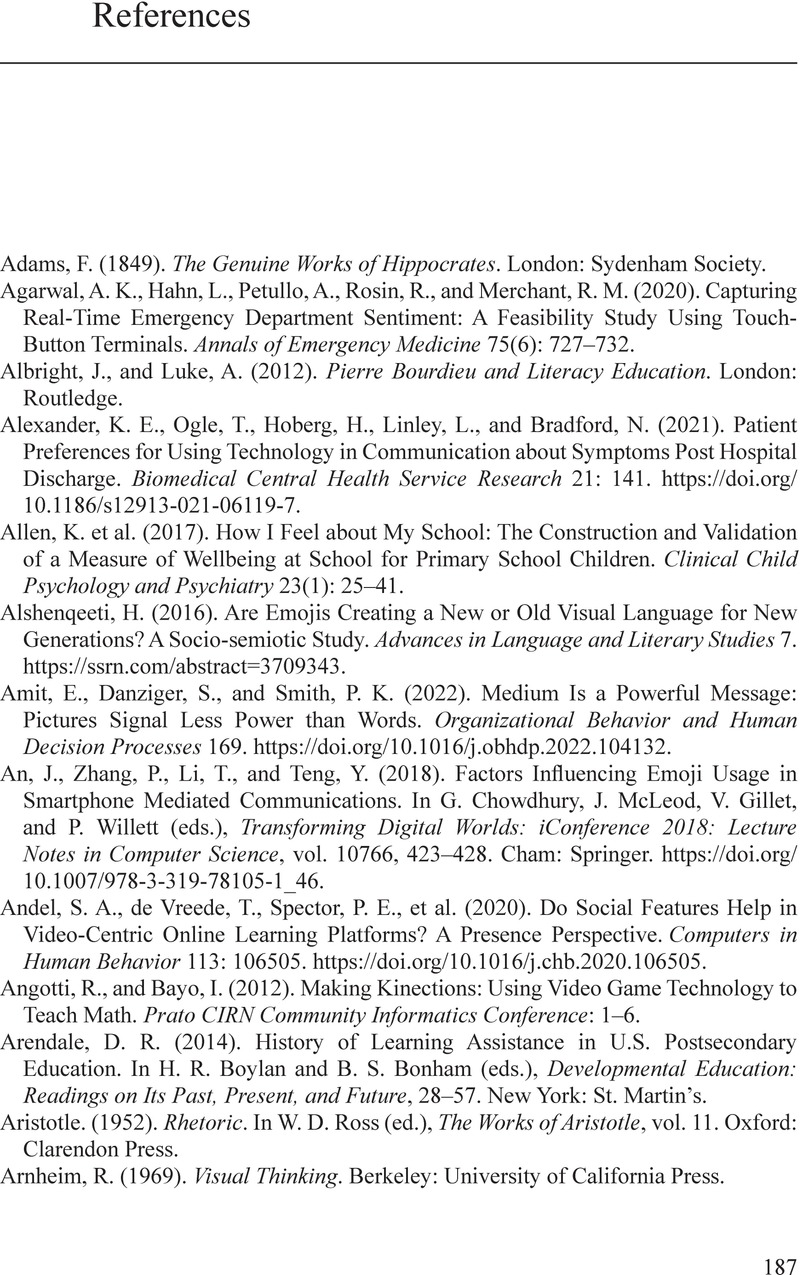Book contents
- Emoji in Higher Education
- Emoji in Higher Education
- Copyright page
- Contents
- Figures and Tables
- Foreword
- Preface
- 1 The Emoji Phenomenon Reviewed
- 2 Emoji Literacy as a Teaching Tool
- 3 Emoji in Healthcare Communications and Education
- 4 A Mixed Methods Study
- 5 Emoji across the Healthcare Landscape
- 6 Emoji in General Education
- 7 Implications and Applications
- References
- Index
- References
References
Published online by Cambridge University Press: 30 May 2024
- Emoji in Higher Education
- Emoji in Higher Education
- Copyright page
- Contents
- Figures and Tables
- Foreword
- Preface
- 1 The Emoji Phenomenon Reviewed
- 2 Emoji Literacy as a Teaching Tool
- 3 Emoji in Healthcare Communications and Education
- 4 A Mixed Methods Study
- 5 Emoji across the Healthcare Landscape
- 6 Emoji in General Education
- 7 Implications and Applications
- References
- Index
- References
Summary

- Type
- Chapter
- Information
- Emoji in Higher EducationA Healthcare-Based Perspective, pp. 187 - 203Publisher: Cambridge University PressPrint publication year: 2024



